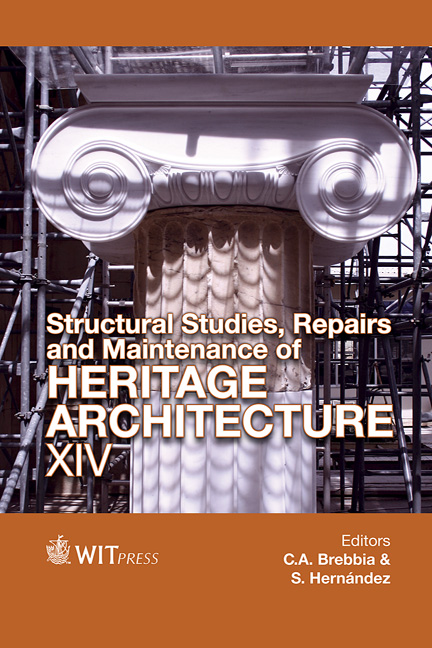When Stones Are No Longer Stones
Price
Free (open access)
Transaction
Volume
153
Pages
7
Page Range
421 - 427
Published
2015
Size
1,541 kb
Paper DOI
10.2495/STR150351
Copyright
WIT Press
Author(s)
E. Zapatero
Abstract
Amongst the various architectural heritage objects, stone building forms are recursive regardless of their dressing and bond. Many of these constructions are subject to restoration interventions which apply consolidation techniques and criteria that can affect the characteristics of these stone constructions, favouring their preservation or, on the contrary, reducing or destroying their intrinsic values.
On the other hand, Brandi claims that the artistic object consists of image and matter, matter being the support for the manifestation of the image. This formulation, which he also applies to architectural objects, continues by stating that matter unfolds in material appearance and material structure. However, matter is not only the support for the image and artistic values, but also contains great documentary value both in its structure and appearance. Based on this definition, this paper will decipher the characteristics of historical masonries, analysing interventions on architectural heritage and how the application of different consolidation techniques affect the documentary value of the matter. This will lead to conclusions regarding which techniques are suitable for preserving the masonry’s, identifying in which cases stones no longer fulfil the functions for which they were originally employed. When this happens, stones lose their purpose, they may seem like pieces of a constructive and mechanical system that has currently ceased to exist. This could lead to a misinterpretation of the building, reducing its integrity and documentary authenticity.
Keywords
masonry walls, consolidation technique, documentary value, restoration, conservation




